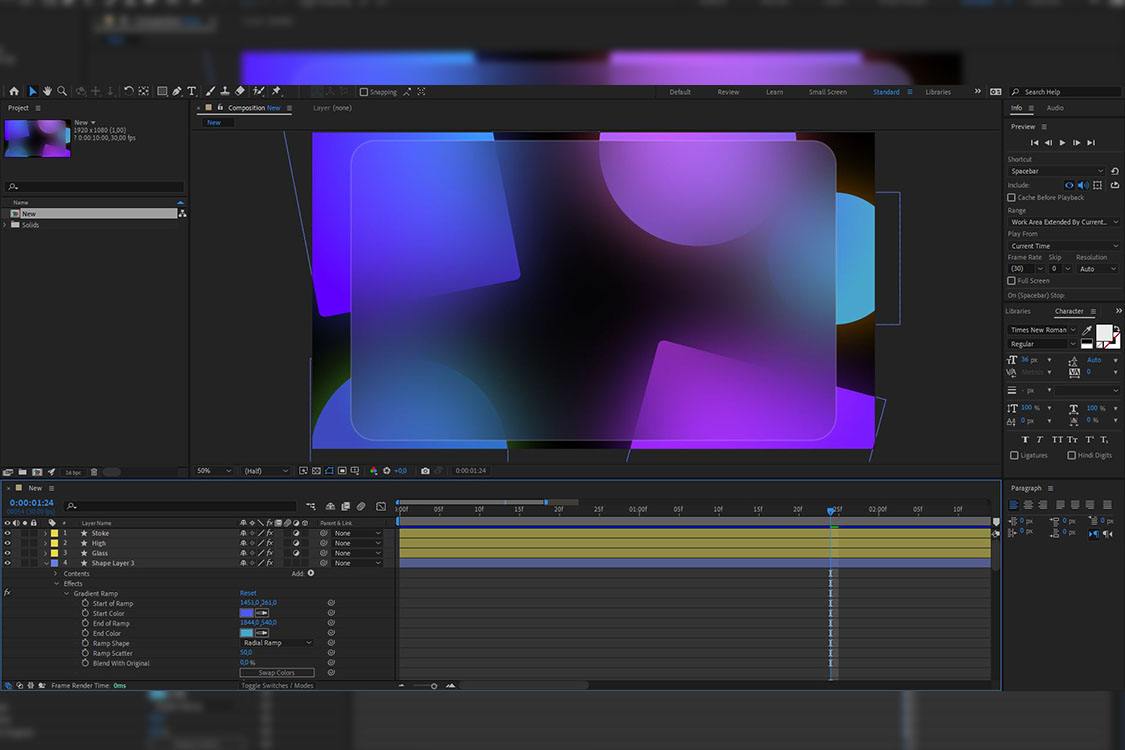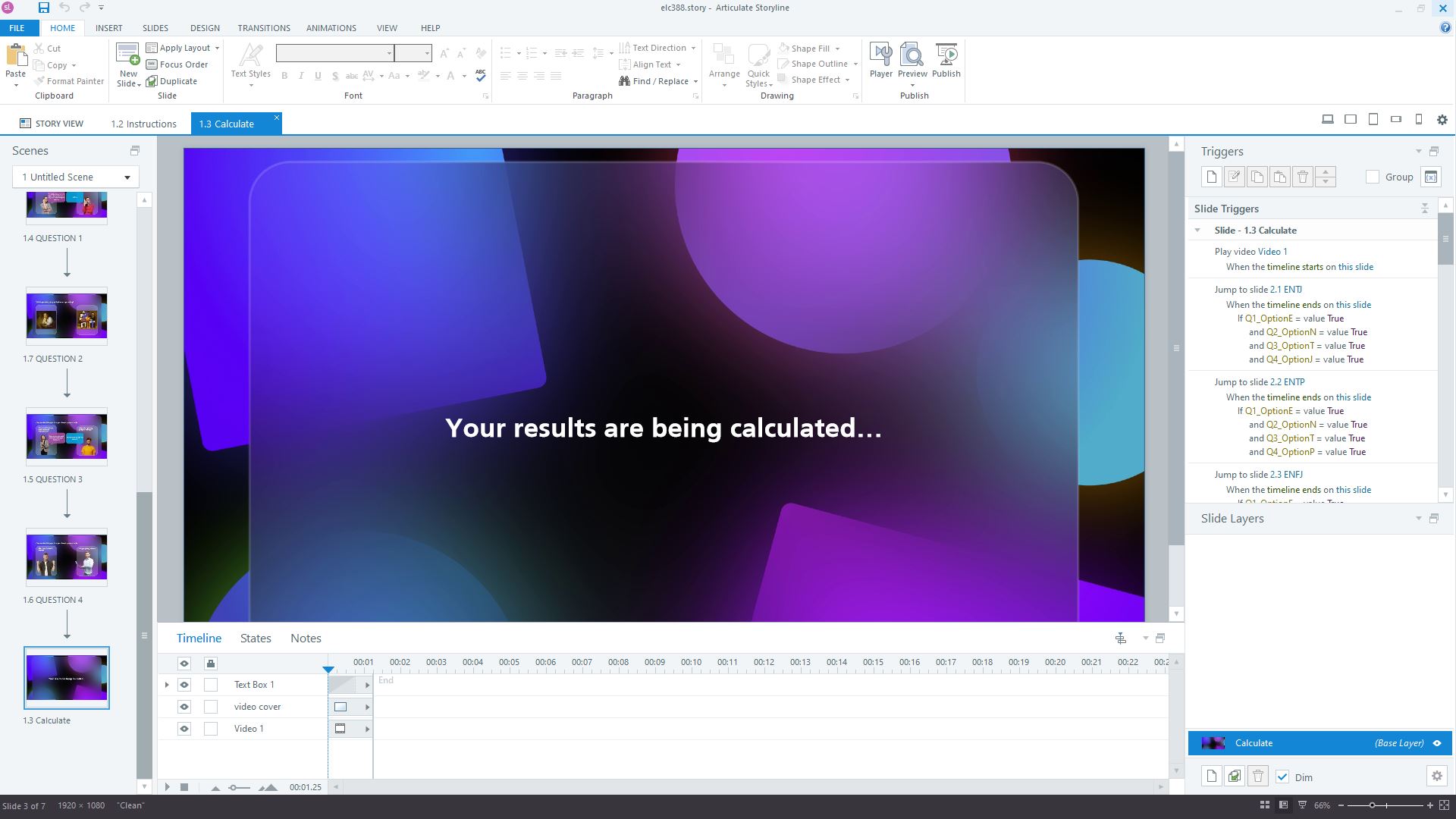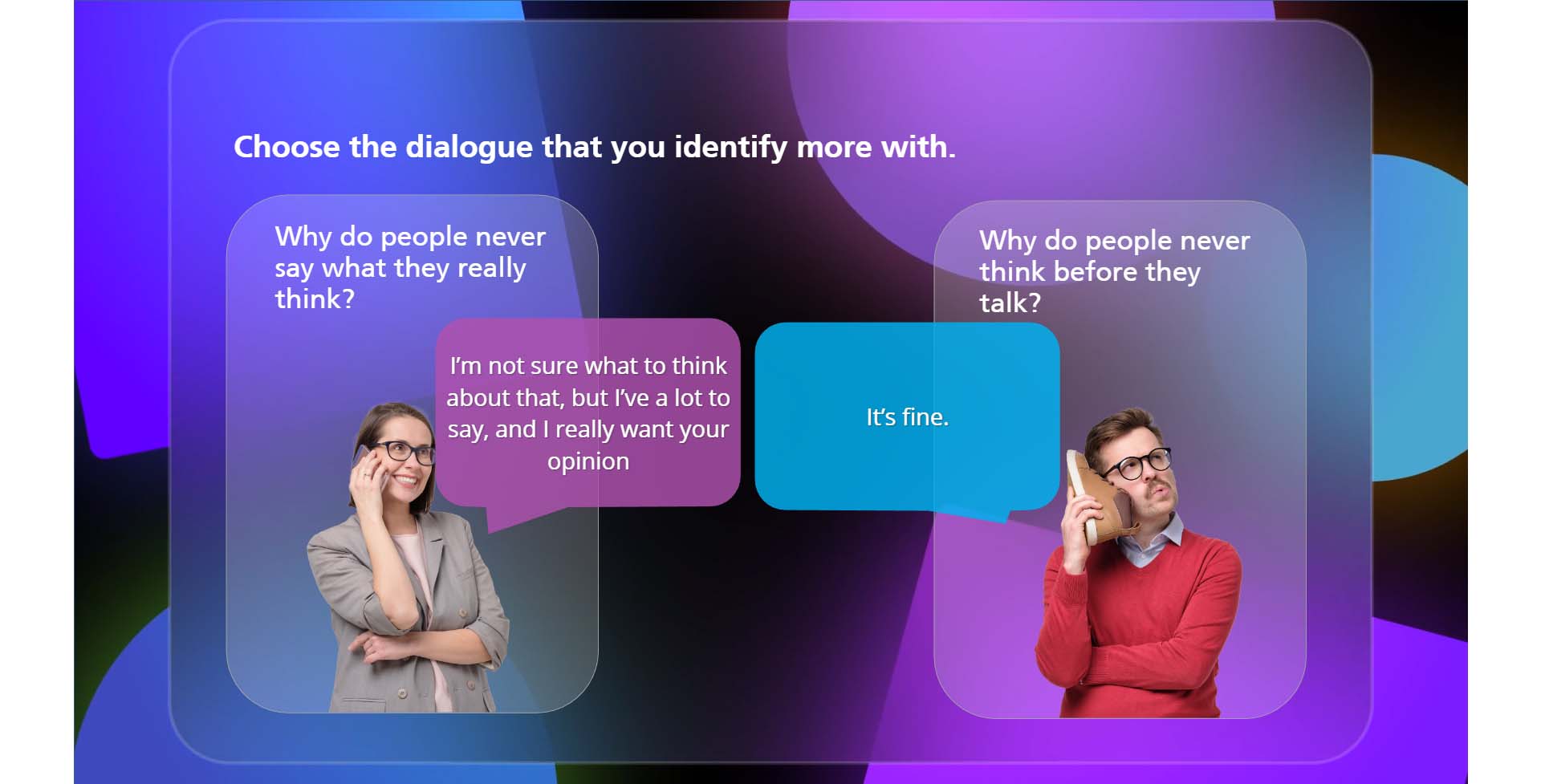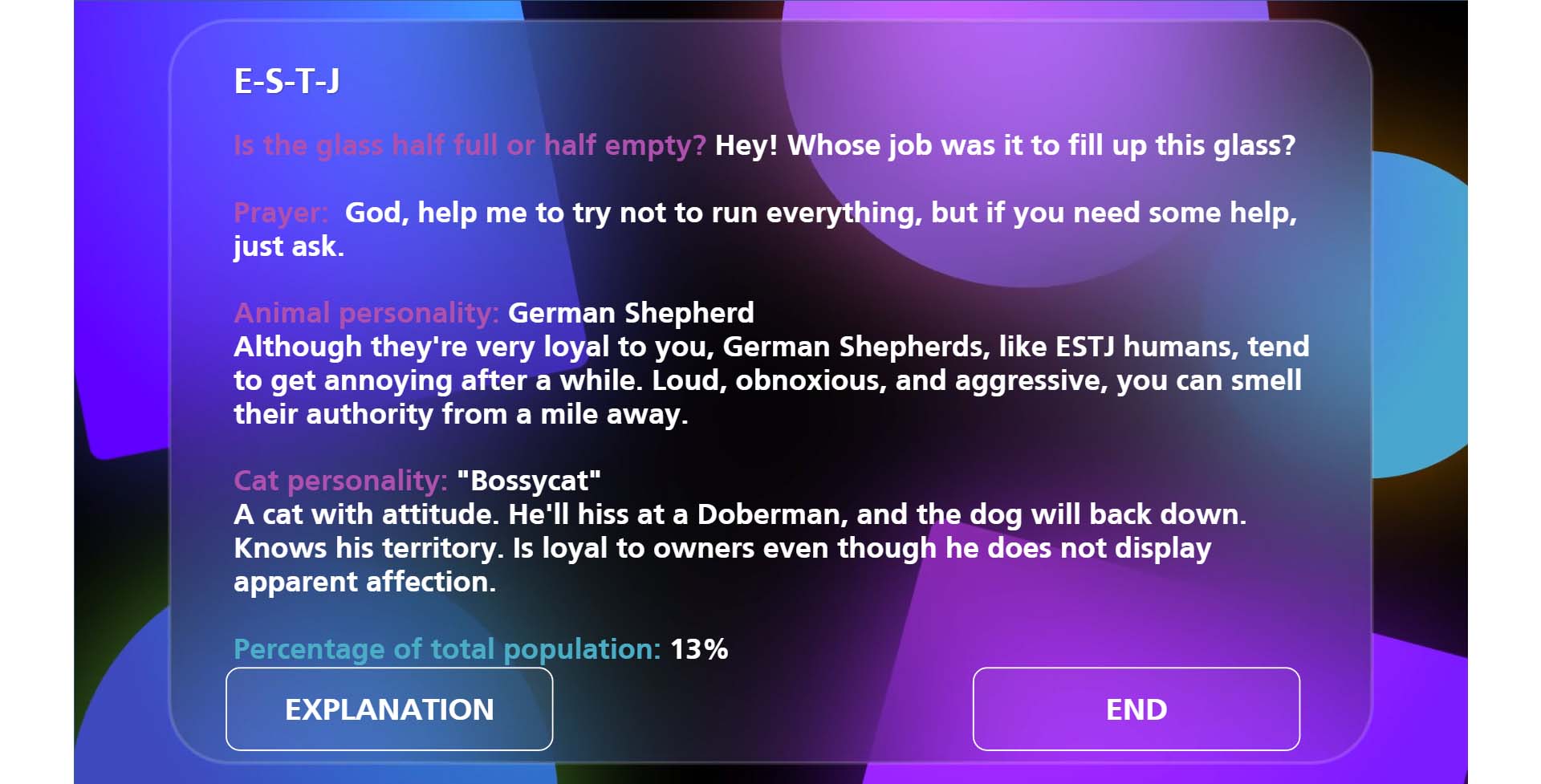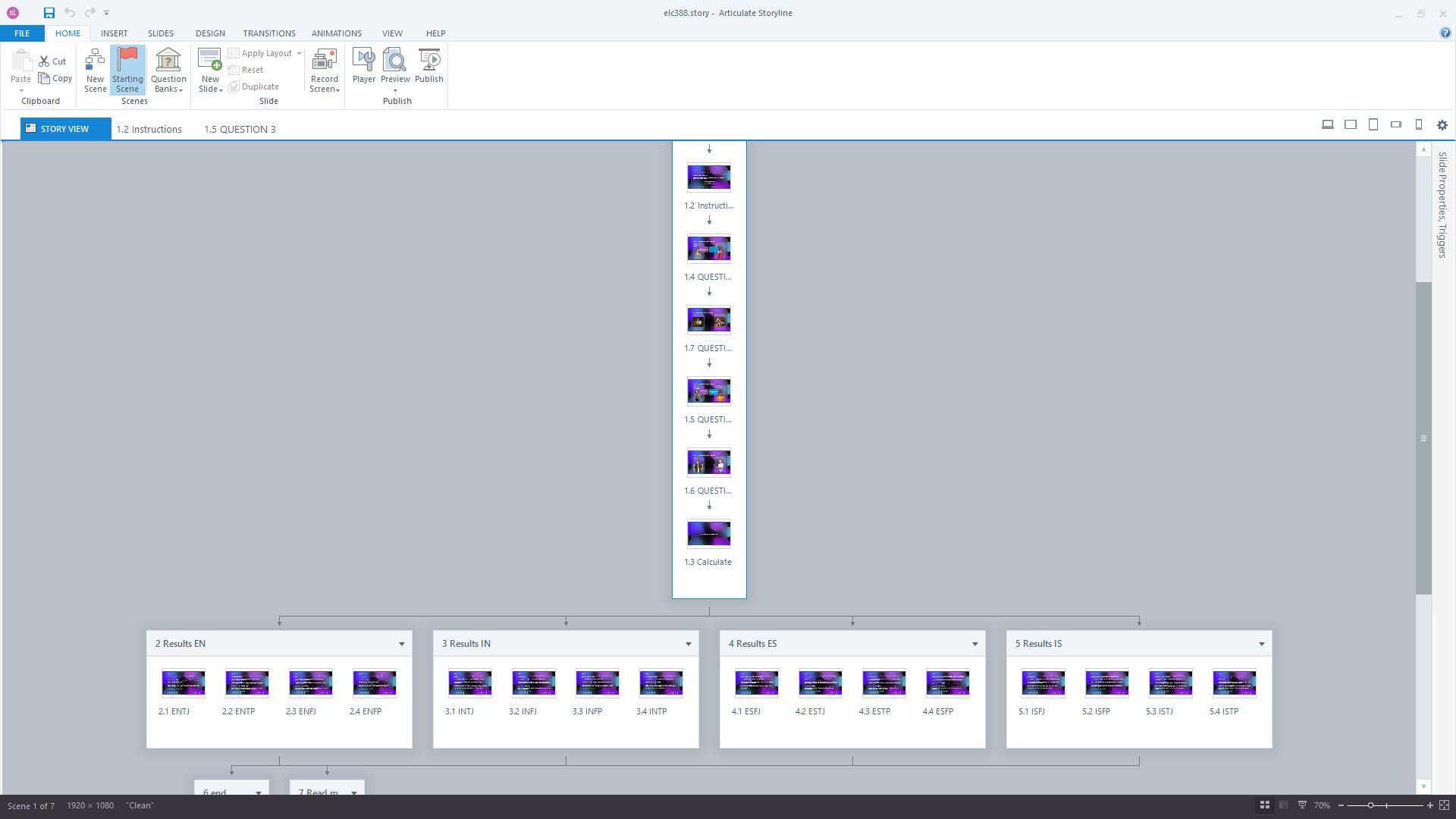This week’s challenge was to create a personality quiz.
Social quizzes and personality tests are all over the internet. They’re fun, engaging, and a great way to discover yourself. But, for eLearning developers such quizes are a great way for practicing the usage of variables.
My eLearning pre-test submission
For this submission, I decided to combine the current challenge with a previous one in which I didn’t have the chance to compete. So, I combined the #310 challenge, which was about using Glassmorphism Design in Elearning, with the current one.
The hardest part, to be honest, was finding an interesting quiz to develop in Storyline. My problem was solved as soon as I came across this Jungian four-letter type activity I found on personalityquiz.net.
What are the Jungian four-letter type personality types
In Myers and Briggs’ theory, personality types are described in terms of four-letter codes, like ESTJ or INFP. Each of the four letters signifies a key aspect of an individual’s personality.
Myers and Briggs’ theory of personality types tells us that seemingly random variations in people’s behaviour are actually quite predictable, as they are due to basic differences in the ways individuals approach key functions of thought, behaviour, and interaction. Myers and Briggs described individual differences in terms of four personality dichotomies. Each dichotomy consists of two distinct and opposing styles, for instance, Extraversion versus Introversion.
Glassmorphism
Glassmorphism is a cool design type that uses the properties found in glasses. It gives a translucent or transparent look and feel to its elements. Unfortunately, such an effect can’t be replicated in Articulate Storyline. Therefore, I used my next favourite application, Adobe After Effects (not really!) to recreate it. It’s pretty simple to make, even as a newbie. There are dozens of video tutorials out there that can help you, and it won’t take more than 20 mins to create it yourself.
So, when I was done, I exported the video file, which was used as the background video for my submission.
Creating the quiz for eLearning in Storyline
Let’s see what goes on within the project. There are four questions for defining one’s personality, each containing two answers. So, as each answer had to be kept separately for the result, I had to use eight True/False variables. All of them are False by default.
To help myself not look here and there for the proper variable, I named the variables based on the number of questions and on the letter of the Jungian activity.
- Q1_OptionE / Q2_OptionN / Q3_OptionF / Q4_OptionJ
- Q1_OptionI / Q2_OptionS / Q3_OptionT / Q4_OptionP
Take a look at the third question, for example. The user has two choices, so I used two variables to store their decision.
- Q3_OptionF
- Q3_OptionT
So, as soon as the user clicks the left choice that indicates that his personality for this particular question becomes ‘F’ , the Q3_OptionF variable becomes True. The choice on the right assigns the ‘T’ option to the user, so when the user clicks this group of items, the Q3_OptionT becomes True.
To prevent conflicts, I added a trigger that advances the slide as soon as the user clicks their choice.
A series of triggers are executed when the user reaches the ‘Calculate’ slide. These 16 triggers lead to a different outcome based on the user’s choices. For example, if the user has chosen:
- Question 1: E (Q1_OptionE=True)
- Question 2: N (Q2_OptionN=True)
- Question 3: T (Q3_OptionT=True)
- Question 4: J (Q4_OptionJ=True)
The above choices mean that the user is eligible for the ending called ENTJ, so the trigger takes them to this particular ending slide.
That’s all. I hope this tutorial is helpful for all the great folks out there seeking to enhance their Articulate Storyline Skills. If you have any comments or objections, I would be happy to assist you. You can find me on LinkedIn
You can find the complete list (sort-of) of all the eLearning heroes community challenges tutorials I’ve created at this link.
